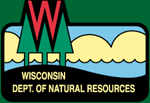

CEE 514 Final Project
by Eric Winkelmann
for Professor Chin Wu
Fall 2003
Background |
| NR 328 is a newly enacted administrative rule of the Wisconsin Department of Natural Resources (DNR). Its creation stems from the need to address Wisconsin's growing erosion control issues. As more and more of Wisconsin's lakefront properties are developed, erosion control structures are causing some concern. Habitat and ecosystem disruption due to shoreline alterations are to be addressed with a plan for a standard methodology of assessment and implementation of control guidelines. Administrative standards for erosion control structures are to be clearly identified in NR 328 to allow for more consistent decision making throughout the entire state of Wisconsin. |
Site Assessment |
||||||||
| NR 328 is designed to provide consistent and logical methods for assessing
the severity of erosion. A case-by-case analysis procedure has been developed
that gets the property owner involved in the process, which also expedites
the permitting process. Applicants will perform some basic calculations
to assess their own site based on information provided to them by the DNR.
Using a lake map (issued by DNR) the fetch is measured and average
mean water depth is calculated by averaging five evenly spaced depths across
the fetch. Local windspeed is also provided by the DNR. Using a method
developed by Professor Chin Wu of the University of Wisconsin Madison,
the three values are then used to obtain a calculated storm-wave height
(in feet) for their site with a worksheet that will be provided by the
DNR. The results can then be used to categorize the site as follows:
|
||||||||
|
||||||||
|
The new rule then provides a schedule of appropriate treatments to be allowed for a site based on its wave energy classification from the above table. The guidelines for appropriate treatments based on site classification are outlined below: Low Energy Sites: It is recognized for these sites that simply recovering the natural plant community is the best way to control erosion and recover habitats that may have been previously lost. Some acceptable methods include fiber logs and mats, brush mattresses and layers, and temporary screens. Live stakes and branchbox breakwaters may also be used to dampen waves and recude velocities. Encouraged vegetation also has wave dampening effects and aids in trapping suspended sediment. Moderate Energy Sites: Limited use of rock at the toe of the bank is to be allowed in conjunction with revegetation of the site. The plant materials are required and will aid in the cohesion and strength of the overall structure. High Energy Sites: Short-form permits will allow some rock, gravel,
cobble, and rip-rap installations to meet the property owner's greater
erosion control needs. The structure must minimally alter the site, and
this rule is designed to provide for more aggressive shore protection measures.
|
NR 328 Implementation |
| As NR 328 goes into effect, the most effective means of its implementation is the increase of public awareness and ivolvement in the pocesses. One step toward this is the creation of comprehensive websites (still under development) by the Bureau of Fisheries Management and Habitat Protection that will include a number of features to assist waterfront property owners, consultants and contractors. The tools featured on the web pages will be an online calculating system to allow users to simply input their fetch, depth, and wind speed for a specific site to obtain the relevant energy categorization. This allows them to determine appropriate shoreline erosion control methods for their site. The websites will also feature outlines of standard plans, specifications, and the various short-form applications for a number of the discussed erosion control methods. The final aspect of the implementation is a planned publication by the Bureau of Fisheries Management and Habitat Protection. It is to be a rule booklet called A Waterfront Property Owners Guide to Controlling Erosion and Protecting Fish and Wildlife Habitat. |
Conclusions |
| This has been a very informative project for me. I had previously no knowledge of the new regulation NR 328, and I now find it to be and important concept that most Wisconsin citizens should be familiar with. It is good to see the DNR evaluating its own regulations and adding to areas found lacking. I see this new rule as an important step to preserving Wisconsin's natural ecosystems and species habitats while at the same time ensuring the continued enjoyment of these natural features by residents and tourists. The establishment of a statewide standard of implementation for these erosion control considerations is a major improvement over the previous inconsistencies encountered in the evaluation and adaptation of erosion control structures. |